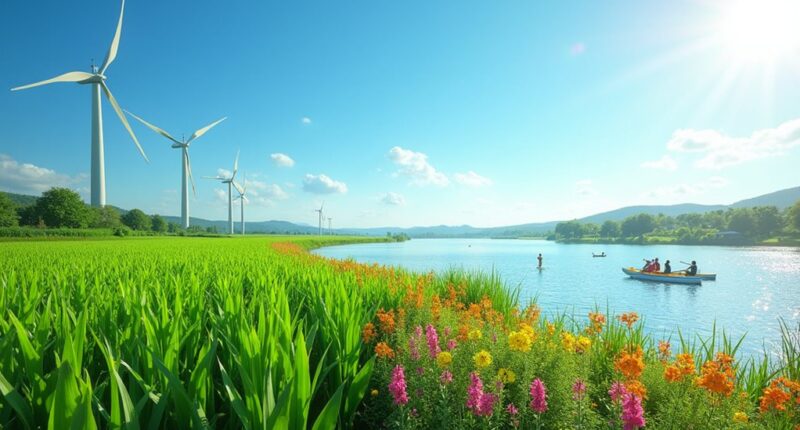Business leaders are flipping climate challenges into profit by embracing adaptation as a chance to innovate. With costs from climate-related disasters soaring, companies are recognizing that sustainable practices aren’t just good for the planet; they’re smart for business. Think of it like buying insurance for your car—it’s about avoiding wrecks down the road! Those who act now can tap into over $2 trillion in new opportunities. Curious about how this can work for your business? There’s more to explore!
Embracing Climate Adaptation for Business Success
In the face of looming climate challenges, businesses are discovering that adapting isn’t just about survival; it’s a golden opportunity to thrive. With the U.S. projected to face climate-related costs soaring to $520 billion annually by 2100 under severe scenarios, it’s clear that the stakes are high. Yet, rather than cowering in fear, savvy leaders are viewing these challenges as a chance to innovate and expand.
Take the agriculture and leisure industries, for instance. Ski resorts might find their winters shrinking by a staggering 50-80% by 2090, making it a prime time for these businesses to pivot. Instead of lamenting lost snow days, some resorts are embracing year-round activities, transforming potential doom into opportunity. Projected loss of up to 25% of corn and soybean yields by 2050 adds to the urgency for agricultural businesses to adapt and find innovative solutions. This shift towards holistic approaches to environmental challenges is essential for long-term sustainability and success.
Meanwhile, global natural disasters racked up $380 billion in losses in 2023 alone, highlighting the urgent need for resilience. However, a shocking 1 in 5 businesses worldwide still lacks a climate adaptation plan. Talk about leaving money on the table!
On the brighter side, climate change is expected to create over $2.1 trillion in new business opportunities, particularly in clean energy and sustainable infrastructure. Renewable energy sources are forecasted to dominate the global electricity scene by 2025, and companies like Patagonia are illustrating how eco-friendly practices can yield a competitive edge. It’s as if they found the cheat code for success—who doesn’t want to be the hero of their own story?
Of course, maneuvering this new landscape requires strategic planning. Identifying climate risks within operations is essential, akin to checking your oil before a long road trip. Companies adopting sustainable food practices throughout their supply chains are seeing both environmental benefits and cost savings in the long term.
And let’s not forget the importance of collaboration; businesses must join forces with stakeholders to secure the resources needed for adaptation. With rising consumer consciousness demanding ethical practices, companies that ignore sustainability might just find themselves in the doghouse.
Embracing climate adaptation could be the best investment a business ever makes—because in this new era, it’s not just about weathering the storm; it’s about learning to dance in the rain.









